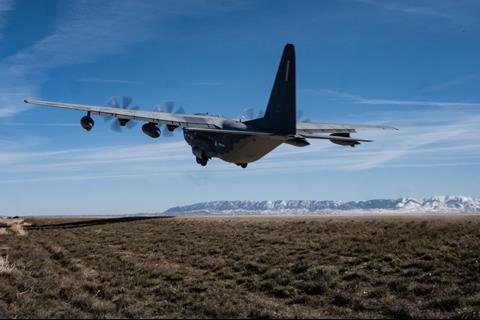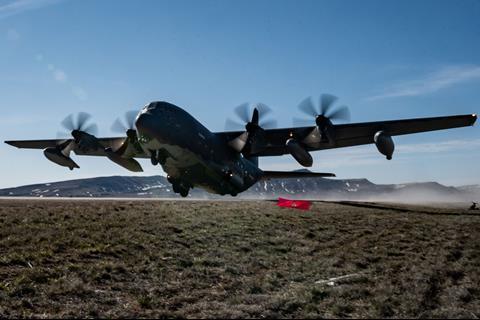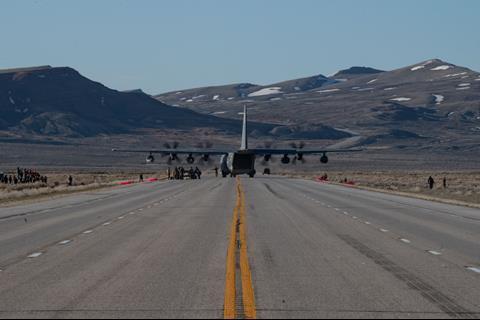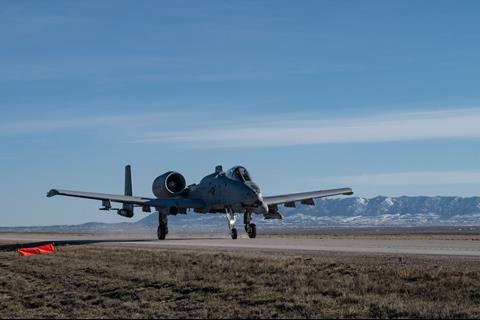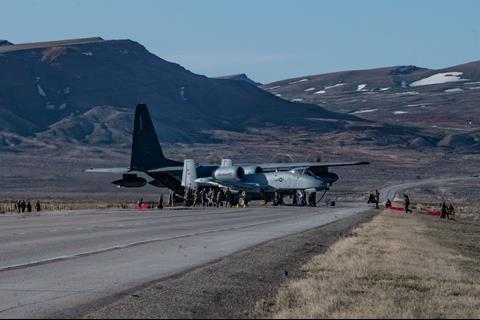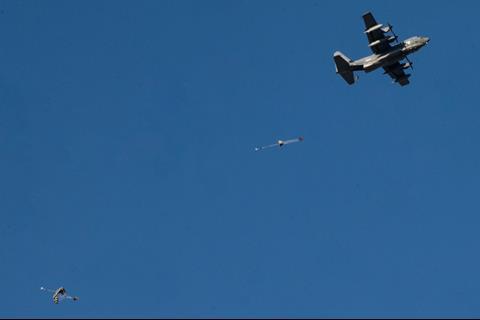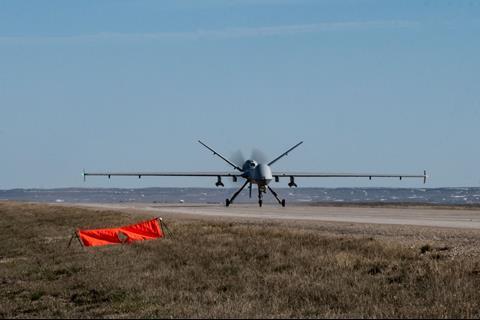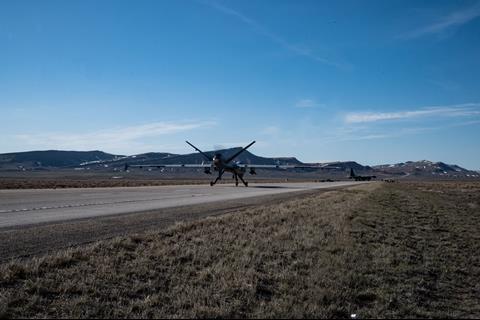Commandos and pilots with the US Air Force Special Operations Command (AFSOC) successfully landed a range of aircraft on a rural highway in Wyoming during recent training exercises.
The drills on 2 May near Rawlins, Wyoming, included a Lockheed Martin MC-130J Commando II multi-role special operations transport, Fairchild Republic A-10 ground attack jets, a General Atomics Aeronautical Systems MQ-9 Reaper unmanned aerial vehicle (UAV) and two Boeing MH-6M Little Bird helicopters from the US Army.
“The flight aimed to test the aircraft and crew’s ability to land in austere environments with minimal infrastructure requirements and maximum flexibility,” says Lieutenant Colonel Adam Schmidt, commander of the 15th Special Operations Squadron that conducted the exercise.
The AFSOC notes MC-130 crews “often find themselves landing in unusual places”, saying the training was designed to prepare flight crews for such non-standard approaches.
“We land in unique places all the time,” says Captain Katheryn Richardson, one of the MC-130 pilots. However, she says bringing the 72,575kg (160,000lb) aircraft down on a roadway at nearly 120kt (225km/h) was anything but normal.
“We all had a moment where we were looking at the highway and thought about how unnatural it felt to be landing on a highway.”
The MC-130 is a modified version of Lockheed’s prolific C-130 tactical transport. According to the air force, the type is used for clandestine “low-visibility” missions, including those involving ressupply, aerial refuelling of helicopters and tiltrotors, and low-altitude infiltration and exfiltration of special operations troops.
“The MC-130J primarily flies missions at night to reduce probability of visual acquisition and intercept by airborne threats,” the USAF notes.
While austere landings are part of the MC-130’s mission set, the recent highway touchdowns are also part of an effort from the air force to better train air and ground crews to operate from small, geographically dispersed hubs with minimal infrastructure – a concept the service calls Agile Combat Employment (ACE).
“ACE is designed to make [the] problem harder for an adversary,” air force secretary Frank Kendall said during a policy speech in early 2022. “We have to figure out exactly the investments we need to make in the mix of defences, hardening, deception and proliferation.”
By spreading out aircraft and support facilities across a large area, the USAF hopes to better protect assets from detection and targeting by long-range precision missile strikes.
“An adversary that may be able to deny use of a military base or an airfield is going to have a nearly impossible time trying to defend every single linear mile of roads,” says USAF Lieutenant Colonel Dave Meyer, deputy commander of the Wyoming exercise. “It’s just too much territory for them to cover and that gives us access in places and areas that they can’t possibly defend.”
Service leaders are tailoring the ACE concept for potential conflicts with China in the vast, island-dotted Western Pacific region. Having a formidable presence there requires the US military to be capable of taking off and landing at austere runways, and also of refuelling, rearming and repairing combat aircraft from such sites.
The recent Wyoming drills tested crews’ ability to perform combat turnarounds – using the MC-130 tanker’s capability to refuel two A-10 Warthog fighters on the ground with the engines running.
The MC-130 also carried multiple MH-6M Little Bird helicopters belonging to the US Army’s 160th Special Operations Aviation Regiment – an elite aviation force. Crews unloaded and flew the small helicopters on a simulated search-and-rescue mission.
The 2 May exercise also marked the first time an MQ-9 Reaper landed on a US highway, AFSOC says.





















